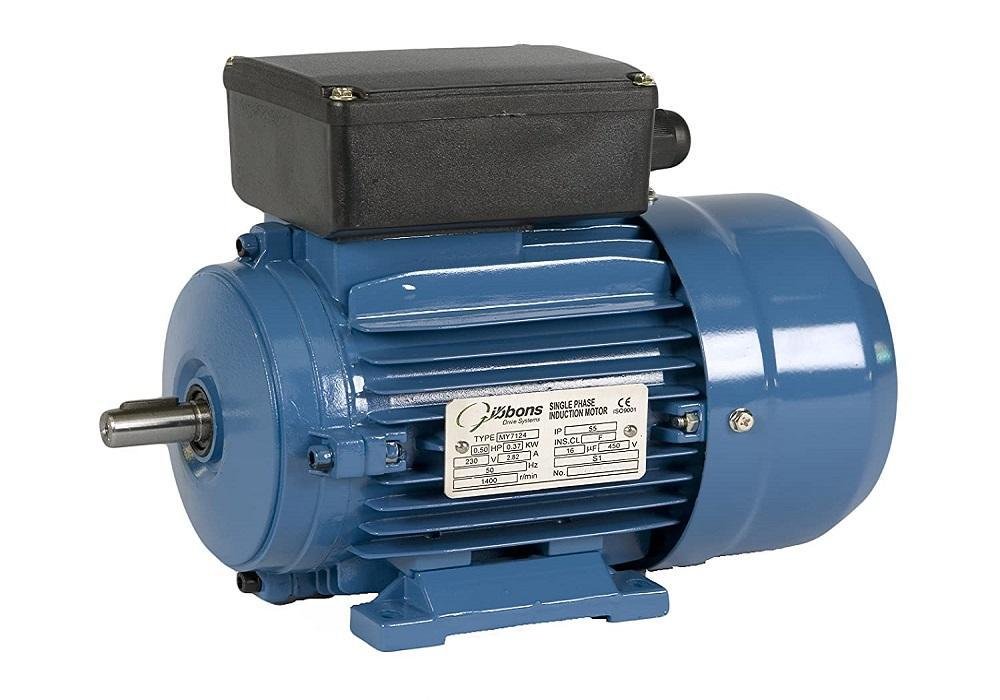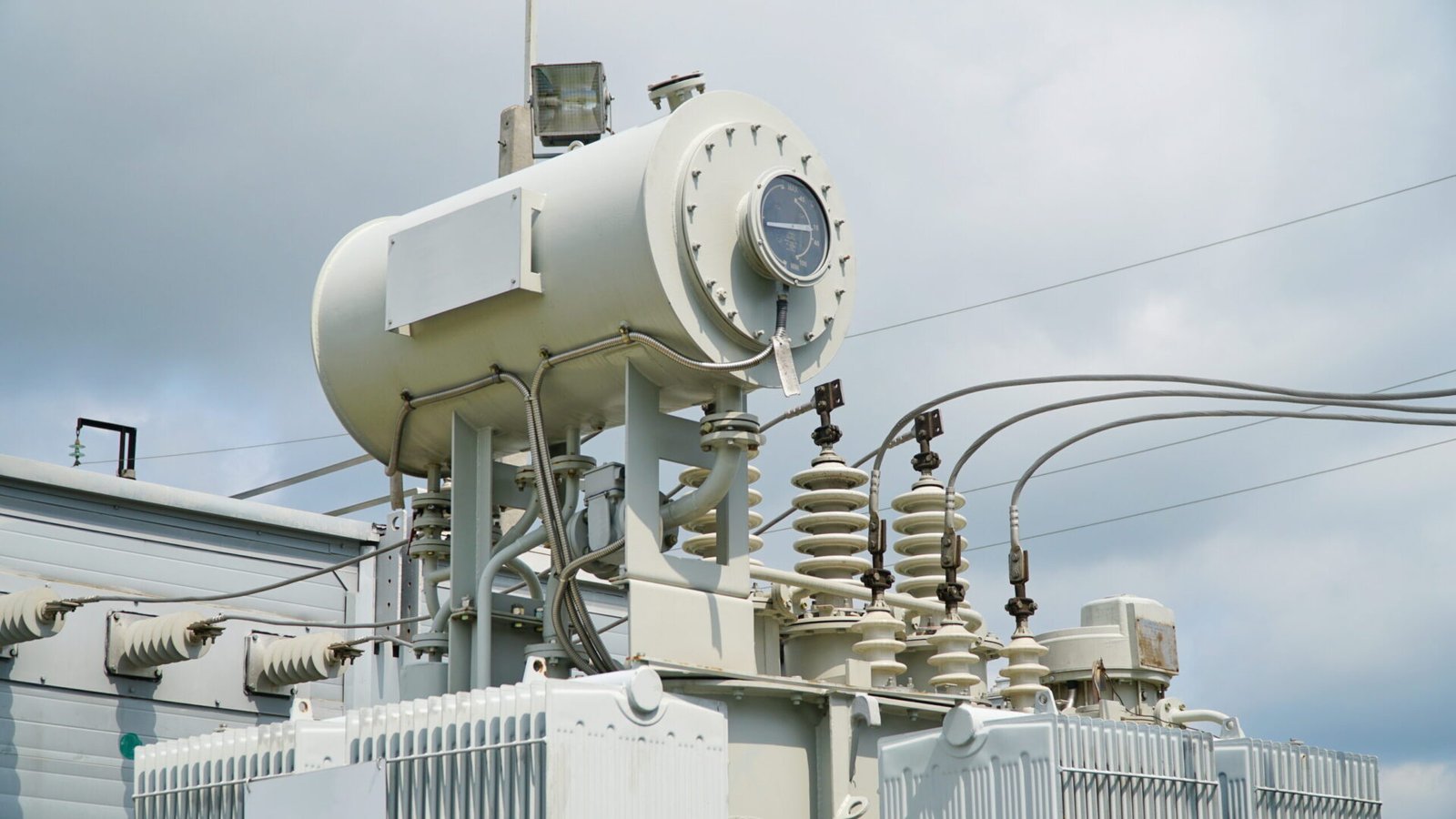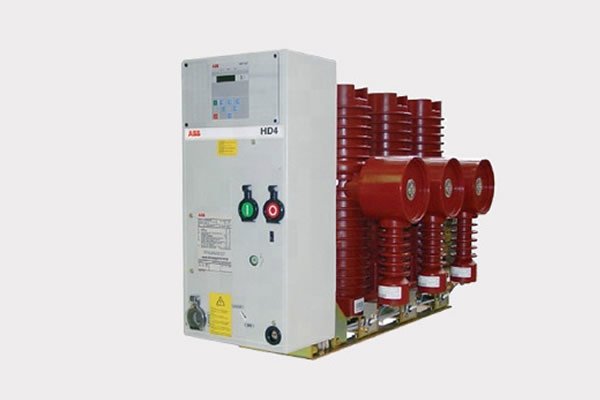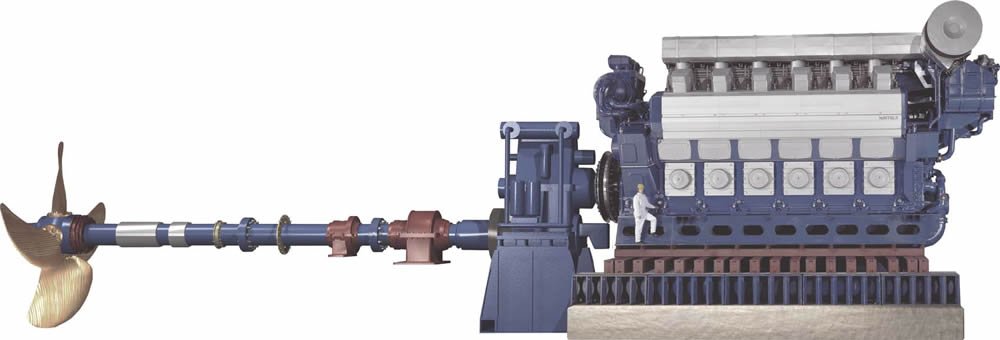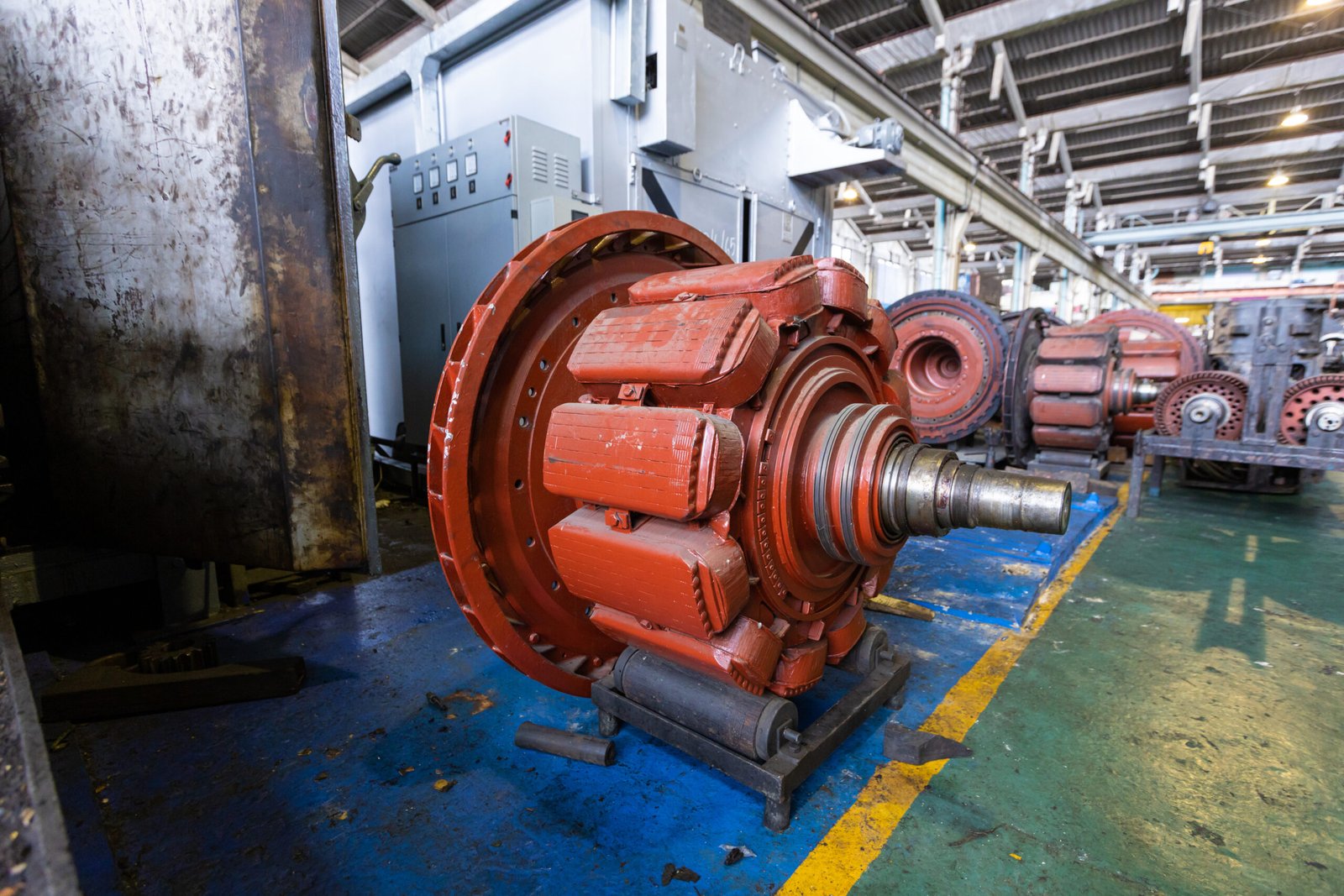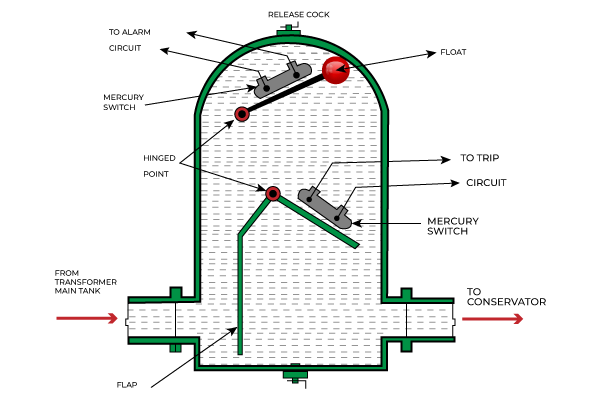Single-phase induction motors are widely used in different areas, such as fans, pumps, or other household units. In this article, we will explain the working principle and the construction of a single-phase induction motor.
Working Principle
Single-phase induction motors work according to the concept of induction. In other words, the spinning magnetic field appears due to the alternatively flowing recent via the motor’s stator continuity. The spinning magnetic energy induces kinetic energy in the rotor strips, causing the rotor to rotate. While a three-phase motor has a revolving magnetic field, single-phase motors ac become reliant on the connection of these across the stator and rotor pneumatic fields to create rotational power. °
Construction
A single-phase motor is composed of two comprehensive entities: the stator and the rotor. The stator is the motor’s fixed portion and comprises laminated steel layers. The stator continuity is connected to AC electric energy at the time of origin. In contrast, the rotor is the spinning part of the motor and can be a squirrel cage rotor or a wound rotor. The previous category refers to the rotor strips momentarily completing a circuit against the common pattern. In this case, the rotor winding interacts via peripheral resistors. The device design also incorporates slash shields, axes, and a rotor to keep the rotor. The housing secures the motor from sewage and gives it damp immunity. A solitary-phase motor operates on the principle of ac induction, applying the connecting rod’s magnetic energy, statoric energy, and rotational energy applications to help you appreciate it.
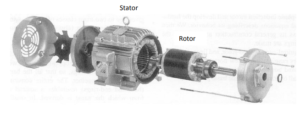
Construction of Single-Phase Induction Motor
A single-phase induction motor is an AC motor that runs on a single-phase electrical power source.
The motor employs electromagnetic induction to generate rotational motion and is widely utilized in various applications such as fans, pumps, and home appliances.
– Single-phase induction motors comprise a rotor and a stator. The stator houses winding coils that are linked to the power source and generate a revolving magnetic field. The rotor is a cylindrical structure with a squirrel cage design that revolves within the magnetic field generated by the stator.
– These motors have a straightforward design and are cost-effective, which makes them a widely preferred option for various applications. Nevertheless, three-phase motors exhibit higher efficiency and beginning torque in comparison to single-phase motors.
– Single-phase induction motors can be categorized into two primary types: Capacitor start motors and Capacitor run motors. Capacitor start motors are equipped with a beginning capacitor to enhance the initial torque, whilst Capacitor run motors feature a permanent capacitor to enhance overall efficiency.
Understanding the distinctions between single-phase and three-phase motors is crucial to selecting the appropriate motor for a particular application. Single-phase induction motors are commonly employed for lesser loads and applications that prioritize simplicity and cost-efficiency.
The stator of a single-phase induction motor
The stator of a single-phase induction motor is an essential and pivotal component that has a significant impact on the motor’s functioning. The stator in single-phase induction motors is the immobile component of the motor that houses the windings and produces the revolving magnetic field essential for the motor’s functioning.
The stator of a single-phase induction motor typically comprises a laminated steel core and copper windings. The core serves as the conduit for the magnetic field to pass through, while the windings are responsible for generating the electromagnetic field that interacts with the rotor to generate motion.
The windings in the stator of a single-phase induction motor are typically configured to generate a rotating magnetic field when an alternating current is applied to them. The revolving magnetic field engages with the rotor, commonly composed of aluminum or copper, inducing its rotation and propelling the attached load.
Aside from the windings and core, the stator of a single-phase induction motor may also include supplementary components like bearings, end caps, and terminal blocks. These components serve to bolster and safeguard the windings, while also facilitating connections to the external power supply.
The stator of a single-phase induction motor is a vital and indispensable component for the motor’s effective functioning. If the stator is not functioning properly, the motor would be unable to generate the required magnetic field to propel the rotor and create movement. Hence, it is crucial to guarantee that the stator is properly maintained and in optimal functioning condition in order for the motor to function with maximum efficiency.
The rotor of a single-phase induction motor is an essential and influential component in the motor’s operation. Single-phase induction motors are frequently utilized in a wide range of applications, including domestic appliances, fans, pumps, and light industrial machines. Comprehending the rotor and its role is vital for individuals engaged in or pursuing the study of these kinds of motors.
The rotor of a single-phase induction motors
The rotor of a single-phase induction motor is commonly constructed using a squirrel cage design, comprising of copper or aluminum bars that are positioned within slots on a laminated magnetic core. The rotor is situated within the stator, which serves as the immobile component of the motor. Applying an alternating current to the stator windings generates a spinning magnetic field, which in turn induces currents in the rotor bars and generates a magnetic field.
The rotor’s rotation is a result of the interaction between the revolving magnetic field and the induced currents in the rotor bars, which generates mechanical energy. The rotation is the driving force behind the motor’s operation, enabling it to carry out its designated task. The squirrel cage rotor design is widely used in single-phase induction motors because of its simplicity, affordability, and dependability.
Single-phase induction motors utilize several types of rotors, including shaded pole rotors and split-phase rotors. However, the squirrel cage rotor is the prevailing and widely adopted design. The rotor bars are linked together at their ends using end rings, forming a closed circuit that facilitates the passage of induced currents and the production of torque.
Ensuring proper maintenance of the rotor in a single-phase induction motor is crucial for maximizing the motor’s performance and lifespan. To prevent problems such as overheating, vibration, and premature failure, it is advisable to regularly inspect, clean, and lubricate the rotor and bearings.
Ultimately, the rotor of a single-phase induction motor is an essential element responsible for transforming electrical energy into mechanical energy. Comprehending the design, functionality, and upkeep of the rotor is essential for individuals engaged in or pursuing the research of single-phase induction motors. Understanding the functioning of the rotor and practicing suitable maintenance techniques can guarantee optimal motor performance and extend its lifespan.
Comparison between Single Phase and Three Phase Induction Motors
Single-phase and three-phase induction motors are used in industrial and commercial applications. Each variety has pros and cons, making it suited for diverse uses. This article compares single-phase and three-phase induction motors to explain their differences.
Single-phase induction motors:
Single-phase induction motors are used in domestic appliances, tiny pumps, fans, and other applications with single-phase power. These motors are popular for household and small business use since they are straightforward to install and run. However, they have lower power output and efficiency than three-phase motors.
Single-phase induction motor advantages:
1. Simple setup and operation.
2. Useful in single-phase power supply applications.
3. Economical for modest installations.
4. Lower maintenance than three-phase motors.
Single-phase induction motor drawbacks:
1. Low power and efficiency.
2. Higher beginning currents can cause voltage swings.
3. Less dependable than three-phase motors.
4. Incompatible with high-power applications.
Three-phase induction motors:
Industrial applications include pumps, compressors, conveyors, and heavy machinery employ three-phase induction motors. They are suitable for high-power applications that require dependability and performance since they have higher power output and efficiency than single-phase motors.
Advantages of 3-phase induction motors:
1. More power and efficiency.
2. More reliable and robust than single-phase motors.
3. High-power compatible.
4. Reduce beginning current and voltage swings.
Three-Phase Induction Motor Drawbacks:
1. Require three-phase power, which may not be accessible everywhere.
2. More complicated installation and operation than single-phase motors.
3. Needs more upkeep.
4. More expensive than single-phase motors.
Finally, your application determines whether you use single-phase or three-phase induction motors. Single-phase motors are good for small-scale applications using a single-phase power source, whereas three-phase motors are good for high-power industrial applications that need dependability and efficiency. Understanding the distinctions between these two motors lets you choose one that meets your demands.

